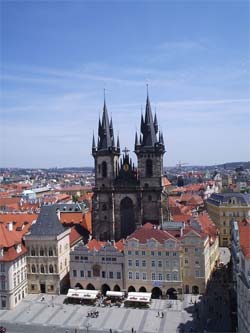
The historic core of Prague has been a heritage reserve for 50 years
 |
The Prague heritage reserve encompasses practically the entire center of Prague, including the Old Town with Josefov, Malá Strana, Hradčany with Prague Castle, New Town, as well as Vyšehrad and parts of Vinohrady, Holešovice, Podolí, and Smíchov. Additionally, the reserve is surrounded by a protective zone covering a total area of 8963 hectares. A variety of architectural styles intersect here, ranging from Romanesque through Gothic, Renaissance, Baroque to Cubism or Functionalism. The heritage reserve is exceptional on a global scale, not only for its size and number of monuments but mainly for the preservation of entire architectural ensembles, streets, and squares. There are more than 1300 protected buildings within it, including 28 national cultural monuments, such as the Old Town Square with the town hall and Týn Church, Prague Castle, or Charles Bridge.
The government regulation from July 1971 established strict conditions for construction activities in the reserve. According to it, for example, all modifications to immovable monuments must be addressed and carried out with regard to the permanent security of their material substance. When constructing new buildings and making external modifications to unprotected objects, attention must be paid to the architectural relationships with the monuments. The planning and implementation of all transport and infrastructural constructions in the reserve must not disturb its environment or threaten individual monuments.
However, developments in recent decades have repeatedly threatened Prague's monuments, especially their continued presence on the prestigious UNESCO list. Due to insensitive interventions (such as the demolition of Špaček's house, the insensitive reconstruction of the Darex Palace on Wenceslas Square, or the controversial building in the Myslbek gap) and the absence of construction regulation, the American non-profit organization World Monuments Fund included the Prague reserve among the one hundred most endangered monuments in the world in 1997.
The English translation is powered by AI tool. Switch to Czech to view the original text source.
0 comments
add comment










